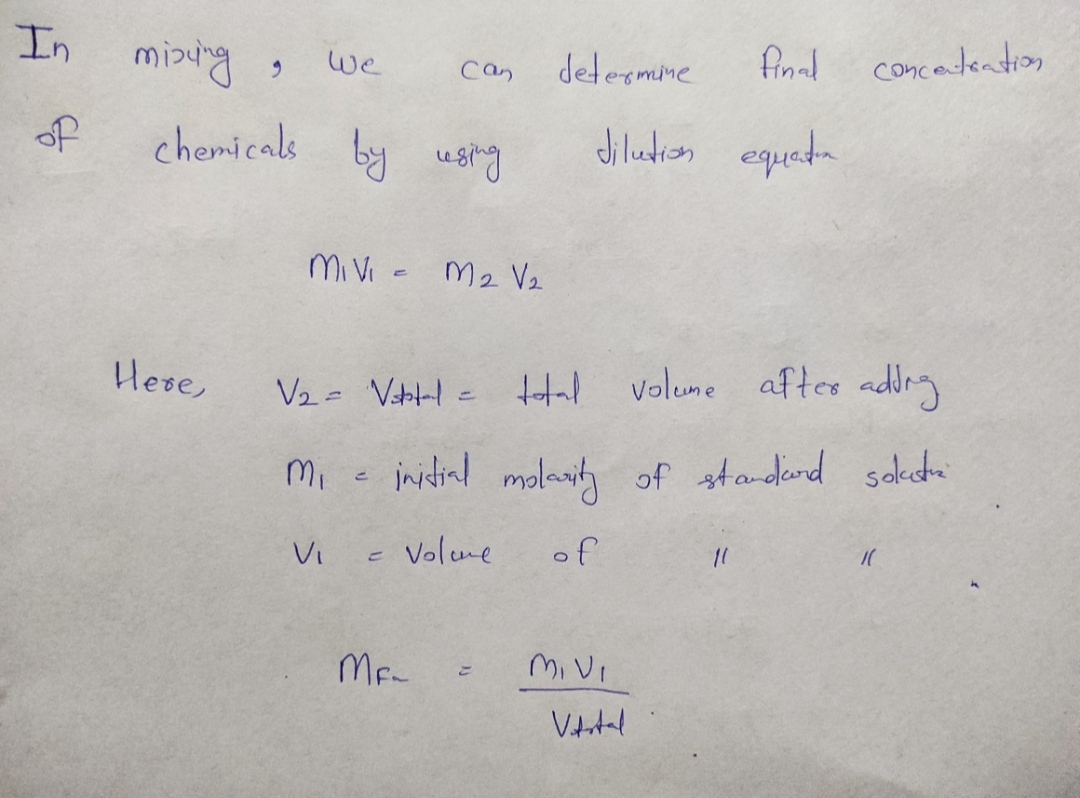As part of this experíment you will need to determine the concentrations of Fe* and SCN+ ions present in test tubes 1-9. These values can be calculated usíng the volumes and concentrations provided in Tables 1 and 2 of the Equilibrium Lab - Procedure and the dilution equation (M,V1 = %3D M2V2). Note: the solutions provided in the lab, and therefore the tables in the lab document, are the compounds used to prepare the solution. You must determine the concentration of the ions based on how these compounds dissociate in solution Complete the following table by filling the the calculated initial concentrations of each substance. Be sure to: Pay attention to significant figures • Round appropríately Use decimal notation (not scientific) Do not include units
As part of this experíment you will need to determine the concentrations of Fe* and SCN+ ions present in test tubes 1-9. These values can be calculated usíng the volumes and concentrations provided in Tables 1 and 2 of the Equilibrium Lab - Procedure and the dilution equation (M,V1 = %3D M2V2). Note: the solutions provided in the lab, and therefore the tables in the lab document, are the compounds used to prepare the solution. You must determine the concentration of the ions based on how these compounds dissociate in solution Complete the following table by filling the the calculated initial concentrations of each substance. Be sure to: Pay attention to significant figures • Round appropríately Use decimal notation (not scientific) Do not include units
Chemistry: The Molecular Science
5th Edition
ISBN:9781285199047
Author:John W. Moore, Conrad L. Stanitski
Publisher:John W. Moore, Conrad L. Stanitski
Chapter12: Chemical Equilibrium
Section: Chapter Questions
Problem 12.ACP
Related questions
Question
![As part of this experiment you will need to determine the concentrations of Fe* and SCN ions
present in test tubes 1-9. These values can be calculated using the volumes and concentrations
provided in Tables 1 and 2 of the Equilibrium Lab - Procedure and the dilution equation (M,V1 =
M2V2).
Note: the solutions provided in the lab, and therefore the tables in the lab document, are the
compounds used to prepare the solution. You must determine the concentration of the ions based on
how these compounds díssociate in solution
Complete the following table by filling the the calculated initial concentrations of each substance. Be
sure to:
Pay attention to significant figures
• Round appropriately
Use decimal notation (not scientific)
Do not include units
Test
Initial [Fe3*] (M)
Initial [SCN'] (M)
Tube
1
3
4.
6.
7
8.
2.](/v2/_next/image?url=https%3A%2F%2Fcontent.bartleby.com%2Fqna-images%2Fquestion%2Fdc81bd7b-6329-4724-89b9-58eac17c86c2%2F826447a3-c3d2-4531-9022-190cd273cb09%2Fd4hqj3_processed.png&w=3840&q=75)
Transcribed Image Text:As part of this experiment you will need to determine the concentrations of Fe* and SCN ions
present in test tubes 1-9. These values can be calculated using the volumes and concentrations
provided in Tables 1 and 2 of the Equilibrium Lab - Procedure and the dilution equation (M,V1 =
M2V2).
Note: the solutions provided in the lab, and therefore the tables in the lab document, are the
compounds used to prepare the solution. You must determine the concentration of the ions based on
how these compounds díssociate in solution
Complete the following table by filling the the calculated initial concentrations of each substance. Be
sure to:
Pay attention to significant figures
• Round appropriately
Use decimal notation (not scientific)
Do not include units
Test
Initial [Fe3*] (M)
Initial [SCN'] (M)
Tube
1
3
4.
6.
7
8.
2.

Transcribed Image Text:Table 1. Volumes of Fe(NO:)3, KSCN and HNO; Used to Prepare Standard Solutions
Test Tube 0.00020 M Fe(NO:)3 (mL)
1.00 M KSCN (mL)
0.10 M HNO; (mL)
1
0.0
5.0
5.0
2
1.0
5.0
4.0
3
2.0
5.0
3.0
4
3.0
5.0
2.0
5
4.0
5.0
1.0
PART II. PREPARING SOLUTIONS FOR DETERMINING THE EQUILIBRIUM CONSTANT K.
Obtain 4 more test tubes and label them 6 through 9.
Add the proper amount of 0.0025 M iron(III) nitrate to each test tube according to the table provided
below. Note the concentration: This is NOT the diluted solution that was prepared in Part I.
a.
b.
Add the proper amount of 0.0025 M KSCN to each test tube; note that the concentration of this
solution is also different from the one used previously.
Add the proper amount of 0.10 M HNO3 to each test tube.
с.
d.
Stopper and shake the test tubes.
Compare your solutions to the example solutions on the Instructor Demonstration benchtop.
е.
f.
Tables 2. Volumes of Fe(NO;)3, KSCN and HNO; Used to Prepare Solutions for the Determination of the
Equilibrium Constant
0.0025 M Fe(NO3)3
(mL)
Test Tube
0.0025 M KSCN
0.10 M HNO3
(mL)
(mL)
1.0
1.0
5.0
7
1.0
2.0
4.0
8
2.0
2.0
4.0
2.0
3.0
3.0
Expert Solution
Step 1

Trending now
This is a popular solution!
Step by step
Solved in 2 steps with 2 images

Knowledge Booster
Learn more about
Need a deep-dive on the concept behind this application? Look no further. Learn more about this topic, chemistry and related others by exploring similar questions and additional content below.Recommended textbooks for you

Chemistry: The Molecular Science
Chemistry
ISBN:
9781285199047
Author:
John W. Moore, Conrad L. Stanitski
Publisher:
Cengage Learning

Principles of Modern Chemistry
Chemistry
ISBN:
9781305079113
Author:
David W. Oxtoby, H. Pat Gillis, Laurie J. Butler
Publisher:
Cengage Learning

Chemistry: The Molecular Science
Chemistry
ISBN:
9781285199047
Author:
John W. Moore, Conrad L. Stanitski
Publisher:
Cengage Learning

Principles of Modern Chemistry
Chemistry
ISBN:
9781305079113
Author:
David W. Oxtoby, H. Pat Gillis, Laurie J. Butler
Publisher:
Cengage Learning